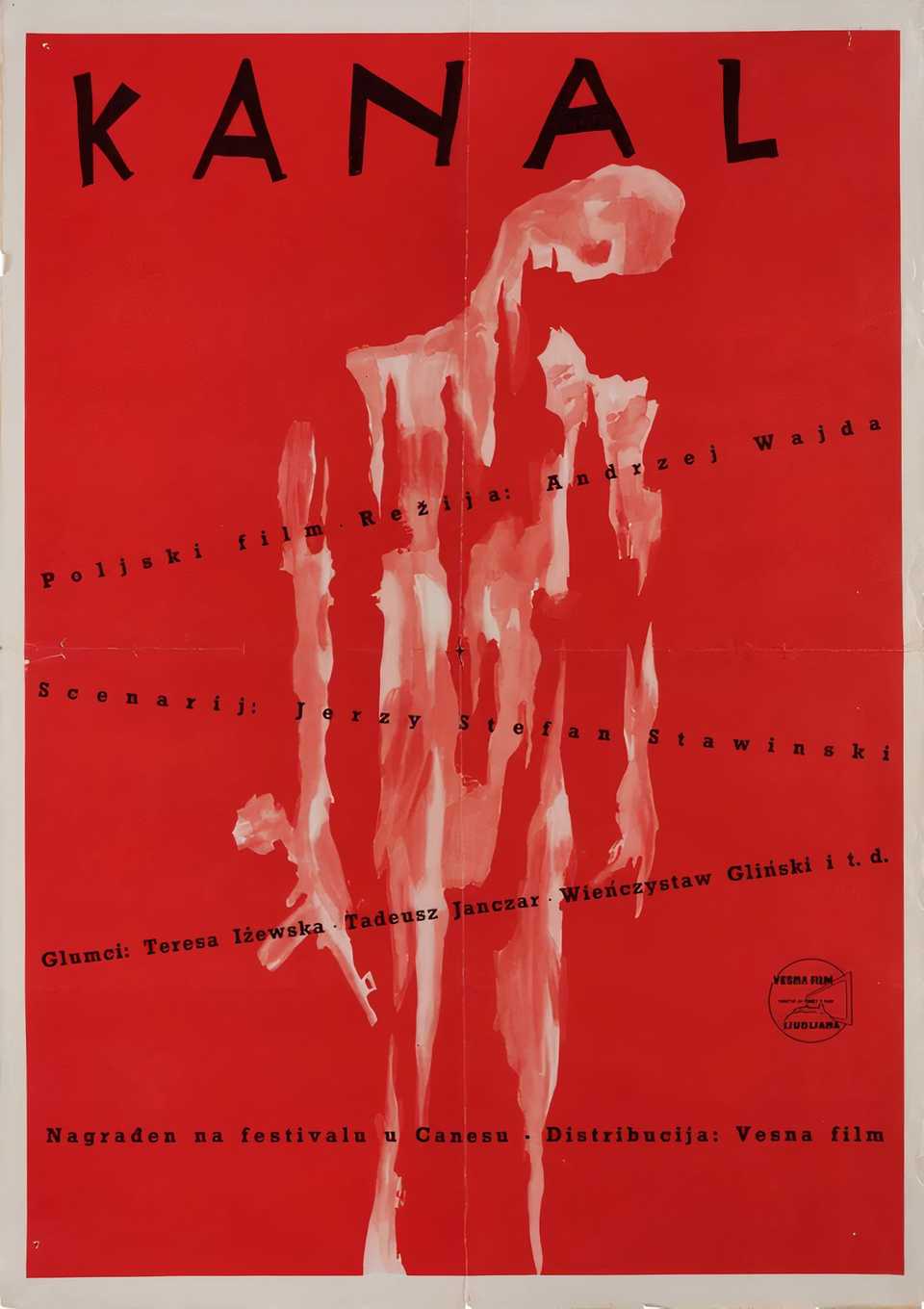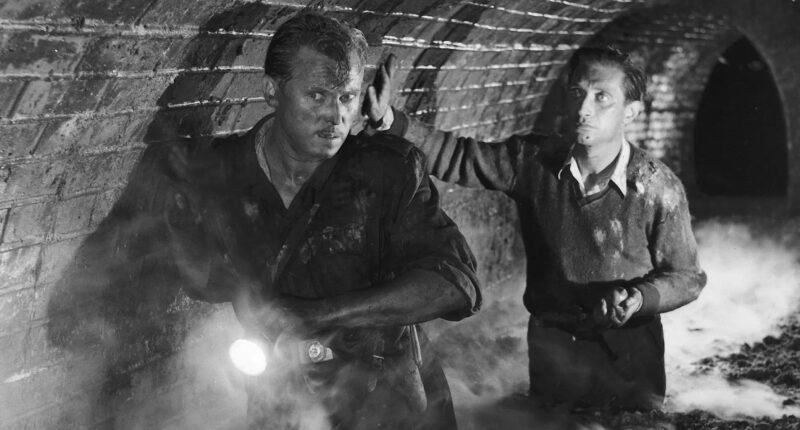You’d think by now filmmakers have told stories from every angle of World War II, and yes, most of the grand, significant moments have been covered, but there remain visceral emotional tales yet unexplored. While beloved films like Saving Private Ryan and The Longest Day both capture the chaos of the frontlines on D-Day, aching with the same stir of sacrifice, neither prepares you for the way Andrzej Wajda’s Kanał quietly captures the devastation of war. Indeed, this forgotten masterpiece isn’t devastating for the way it portrays death, but instead how it explores the slow death of hope.
When Wajda could have made it a story about surviving war, he chose to make it about how war consumes even the bravest, until nothing remains. Adapted from screenwriter Jerzy Stefan Stawiński’s own real-life story, the film is set in 1944 occupied Poland toward the end of the Warsaw Uprising, where we follow a band of resistance soldiers retreating through the sewers to escape advancing German forces. Wajda makes us accompany the characters through the claustrophobic filth as their psyche unravels one after another. Opening with flickers of hope, you’d expect the film to turn things around and brighten up. Instead, Wajda strips away all such illusions until you feel as trapped and suffocated as the soldiers.
‘Kanał’ Offers a Shattering Honesty About War
Kanał is a gritty portrait of the filth, fear and paranoia of war, and for a film made in 1957, Kanał was ahead of its time in its refusal to glorify the pain of its characters. The film’s honest look at war, as a result, caused a scandal in its country of Poland upon its release. Released just over a decade since the end of the war, the Polish public wanted tales of noble resistance
and stories where courageous martyrs could be celebrated as heroes, but Kanał showed their bravest men and women crawling through the sewers, shivering with fever, and hiding from footsteps as they slowly lost faith in the darkness. For audiences who had witnessed that history, they would have preferred some dignity preserved after the catastrophe. The Polish had already been traumatized by the sight of the destruction of their homes and communities and were hoping for a piece of art that would console them in their long-standing grief.
Wajda gave audiences the opposite of what they had expected. He chose to portray the terror and the futility of war, daring to tell them that physical courage doesn’t always save; it sometimes prolongs agony. It is this gritty creative choice that makes Kanał unforgettable. The film has no ambition to be a patriotic epic; it’s a tragedy in the purest sense. It strips human beings down to their final scraps of willpower, where, scene after scene, resistance fighters break down mentally and physically.
Andrzej Wajda’s Relentless Direction Makes ‘Kanał’ a Masterpiece
The staying power of Kanał is extraordinary. Part of its power is in its storytelling, tying different stories into one satisfying whole with emotionally evocative imagery that gets to the core of the tragedy of war. There’s the image of the soldier who leaps forward from his hideout armed only with a spade, sacrificing himself to disable a Goliath Tracked Mine, hoping to buy his friends some time. There’s the image of a woman soldier shouldering her wounded boyfriend through the sewers. There’s also the sight of the civilian woman on the street wailing for her lost daughter. All these images and more paint a grim, yet painfully accurate mosaic of war.
Wajda deliberately designs these to tell the collective story of hopelessness, dehumanization and claustrophobia in the face of war. Just 30 years old when Wajda made the film, the director had already made a name for himself as part of an elite generation of creatives called the “Polish Film School,” who were trying to reckon with the country’s wartime scars. Kanał was the second of his war trilogy that comprised A Generation, which he made in 1955, and Ashes and Diamonds in 1958. Unlike Kanał, both films enjoyed a positive public reception at home (although that status later changed for Ashes and Diamonds during the communist reign).
Wajda’s choice to lock us underground with the resistance fighters is perhaps his greatest creative choice, dragging the viewer away from the chaos of the battlefield and into the filth, darkness, and exhaustion of the underbelly. His cinematography takes us into tight corridors, dimly lit spaces where water drips endlessly and walls close in. Yet, the pace doesn’t slow in such claustrophobic surroundings. Indeed, Wajda amplifies the tension using economical sound design to allow insecurity to seep in, whether it is footsteps overhead causing panic or steady silence that speaks volumes, we are fully immersed in the world of his characters.
His efforts were lauded on the international stage when Kanał won the Special Jury Prize at Cannes in 1957, with Wajda becoming one of Poland’s most prominent filmmakers as a result. If you’re looking for comfort in the Warsaw Uprising, you’ll have to look elsewhere because Kanał offers none. What this first movie about the conflict does is paint a picture of the unflinching ugliness of war—however soul-crushing—and it’s this gamble Wajda took that still resonates with critics and global audiences alike, awarding the film a perfect score on Rotten Tomatoes.

Kanal
- Release Date
-
May 5, 1957
- Runtime
-
1h 35m
- Director
-
Andrzej Wajda








